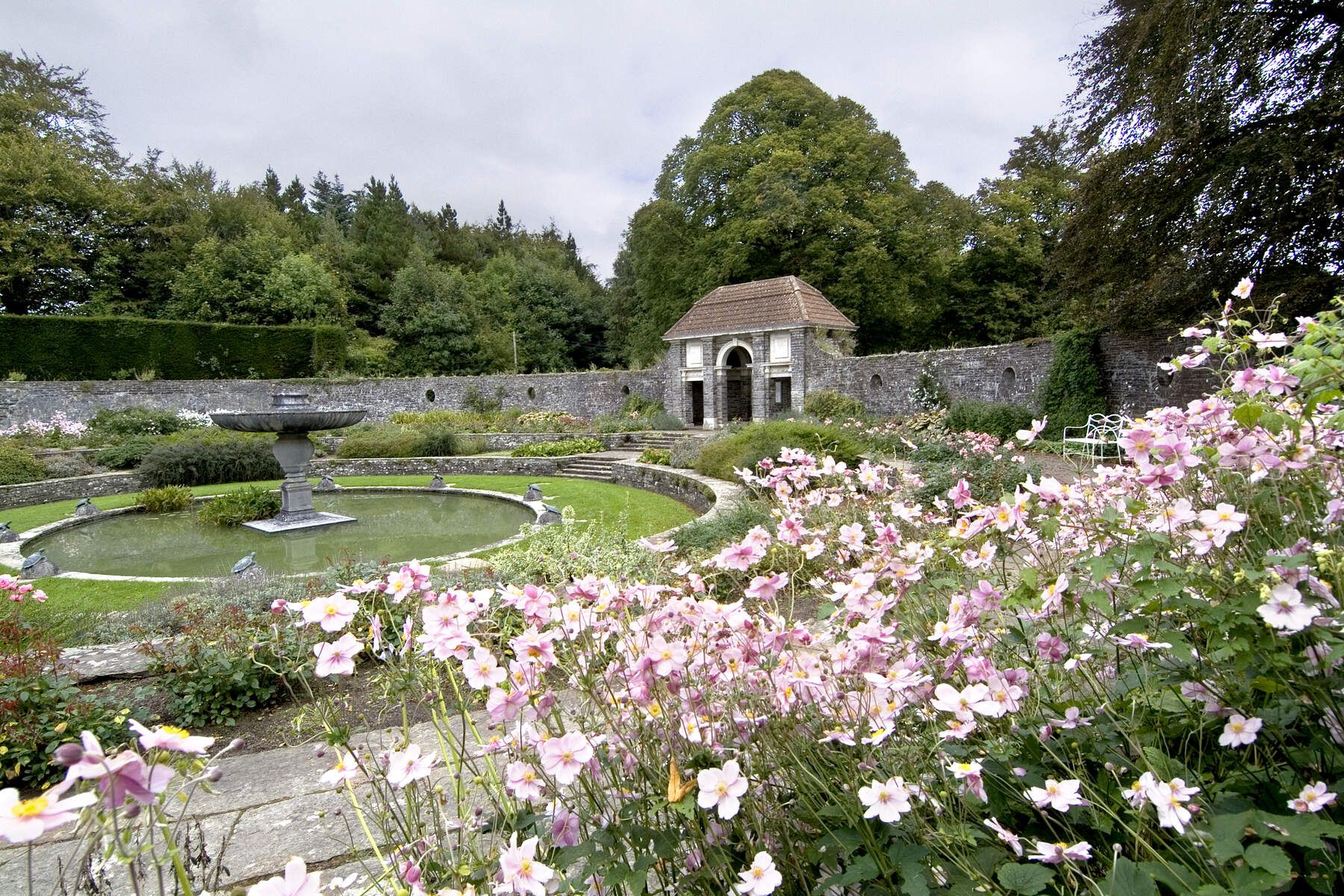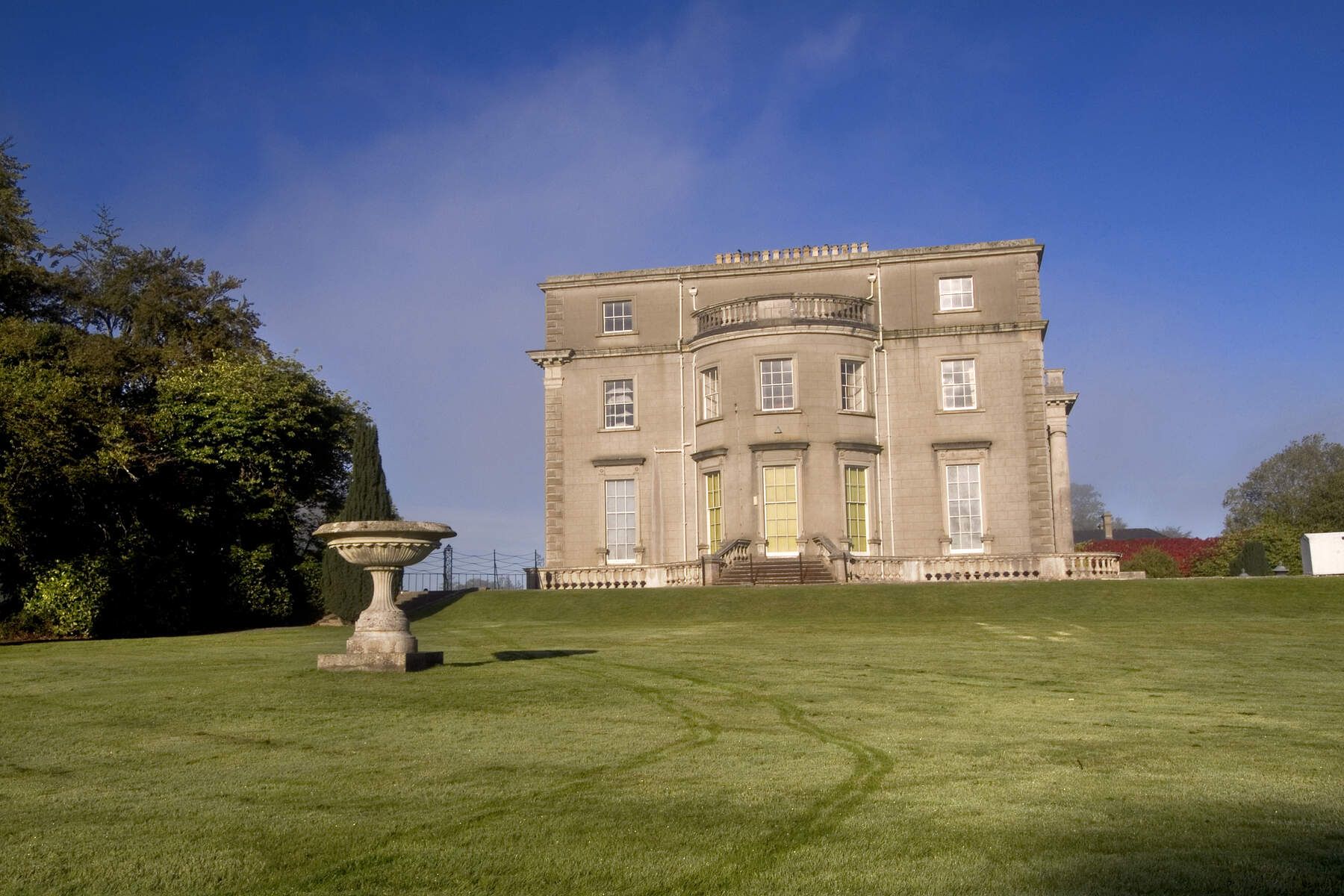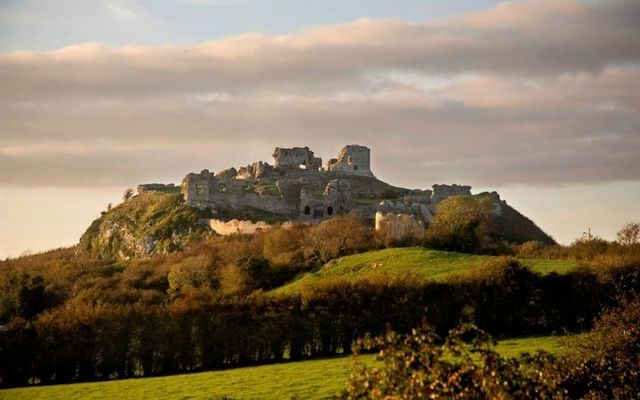County Laois is one of those beautiful Irish counties. It is often overlooked by tourists as a result of the hype surrounding the Wild Atlantic Way or the buzz around the country’s capital city, Dublin.. So here are some hot tips on beautiful interesting spots to visit in County Laois.
Co Laois lacks a coastline and is surrounded by other counties that also don’t have a coastline, but judging by the stunning attractions to be found in the place formerly known as Queen’s County, we can’t see it staying far down on the list of places to visit in the future.
Here are IrishCentral’s top picks of places to visit in Co Laois:
The Rock of Dunamase and Dunamase Castle
Dunamase Castle itself may be in pretty bad shape, but the power this stronghold once must have held over its surrounding lands can still be felt while visiting the prominent outcrop at the Rock of Dunamase.
Beginning life as an early Christian building, Dunamase is first mentioned in the annals of the four masters where accounts are given of Viking invasions and the plundering of Dún Masc, “The Fort of Masc,” in 843 AD.
The castle’s links to important figures in Irish history are strong as it was once owned by Richard Fitz Gilbert de Clare, more commonly known as “Strongbow,” the Norman lord noted for leading the 12th-century Norman invasion of Ireland. The castle was included in the dowry of Aoife, the daughter of Diarmuid Mac Murrough, King of Leinster when she was given in marriage to the Norman conqueror in 1170.
Between 1325 and 1609 the castle was strengthened with the addition of further fortifications while the castle was under the control of the powerful O’Moore family. The strength Dunamase once held is believed to have been finally ended by the forces of Oliver Cromwell.
Despite the castle’s disrepair, visitors will still be taken with the spectacular views the Rock offers over O’Moore country and the ruins give some inclination of the grandeur of Dunamase.
More information: DiscoverIreland.ie
Heywood Gardens

The formal Heywood Gardens. Ireland's Content Pool.
From the exquisite Heywood gardens, located just a short distance outside of Abbeyleix, lovers of the Irish countryside will be able to stand overlooking seven counties while breathing in the work of the eminent architect Sir Edwin Lutyens and the magic of the landscaper Gertrude Jekyll.
Mixing both the great park style with more formal gardens, Heywood shows off both garden types, developed centuries apart, by offsetting the work of Lutyens and Jekyll (completed in 1912), with that of Frederick Trench, who worked on the grounds in the 1700s.
Trench completed the build of Heywood House in 1773, and inspired by travels around Europe, moved hills, dug lakes and follies, and planted trees so as to create an exquisite romantic landscape on the grounds.
Early in the 20th century, the famous Lutyens and Jekyll were hired to create the formal gardens, linking four elements via a terrace that ran along the front of the house. The house is no longer standing but everything else, from the sunken garden to the loggia roofed with red tiles on the top level, still look as marvelous as when they were completed.
More information: HeritageIreland.ie.
Emo Court and Estate

Emo Court. Ireland's Content Pool.
Designed by architect James Gandon, the same man who designed Dublin’s Custom House and Four Courts, Emo Court is a large, formal and symmetrical mansion just outside the village of Emo.
With beautiful gardens and parklands first laid out in the 18th century, the mansion is a perfect example of the neoclassical style, even boasting formal gardens and a lake.
Created for the first Earl of Portarlington in 1790, Emo Court is said to have taken some time to complete and has been uninhabited for several periods before it was acquired by the Jesuits in the mid-20th century.
When the first Earl died just eight years after the house was designed, the mansion lay incomplete until the 1830s, when the Second Earl of Portarlington took over. The Third Earl began the third stage of the work in 1860. When the last of the Portarlingtons left Emo in 1920, however, the house fell into decline until the Jesuits came to its rescue in 1930.
In the 1960s, it was once again sold to Major Cholmeley Harrison, a former London stockbroker, who was determined to return the building to its former glory. Harrison awarded Emo Court to the Irish state in 1994, although he continued to live on the grounds in private premises until his death in 2008.
More information: HeritageIreland.ie

Are you planning a vacation in Ireland? Looking for advice or want to share some great memories? Join our Irish travel Facebook group.
Donaghmore Famine Workhouse and Agricultural Museum
Some of the horrors of the Great Hunger are relived in the Donaghmore Famine Workhouse, one of the original 130 workhouses to be set up nationwide to develop a system of relief for the hundreds of thousands of suffering people throughout the country during the mid-1800s. In total, about 1,200 people, or 10% of the population of the local area, were forced to seek refuge here.
The Donaghmore workhouse first opened in September 1853 and followed the standard set in previous locations that saw standards of living kept as low as possible so as to discourage people from entering. Once the poor underwent the suffering of making the decision to enter the workhouse, they were separated from the rest of their families and set to work on pointless tasks such as building roads to nowhere.
The Donaghmore Museum looks to tell the stories of those who endured the horrifying fate of entering the workhouse through guided or self-guided tours, bringing visitors through the authentically restored original dormitories, a kitchen, and a waiting hall.
Alongside the Workhouse is an agricultural museum that displays a collection of farming artifacts donated by local people, including everything from tools for butter making, and cultivation to horse-drawn equipment.
More information: DiscoverIreland.ie
Poet’s Cottage
Named after the Irish poet Patrick Ryan, who lived in local Camross, Co. Laois, between 1750 and 1825, the Poet’s Cottage is a perfectly restored 19th-century Irish cottage, hoping to give visitors a sense of life in Ireland throughout the 1800s.
Although Irish cottages evolved over the centuries, for the most part, they are constructed of stone with a thatched roof and stood just one room wide and one story wide. Windows were small and placed along the side walls and a chimney stack emerged from one end of the roof. The fire in the hearth was the only source of warmth, and the only manner in which to cook food, families huddled around it for warmth, for light, or to use a crane to hoist pots of food for cooking over the open fire.
Poet’s Cottage is a prime example of the simple perfection of an old Irish cottage, complementing the surrounding countryside in the manner in which it fits into the landscape.
More information: Laois.ie.
*Originally published in May 2022. Updated in May 2024.




Comments